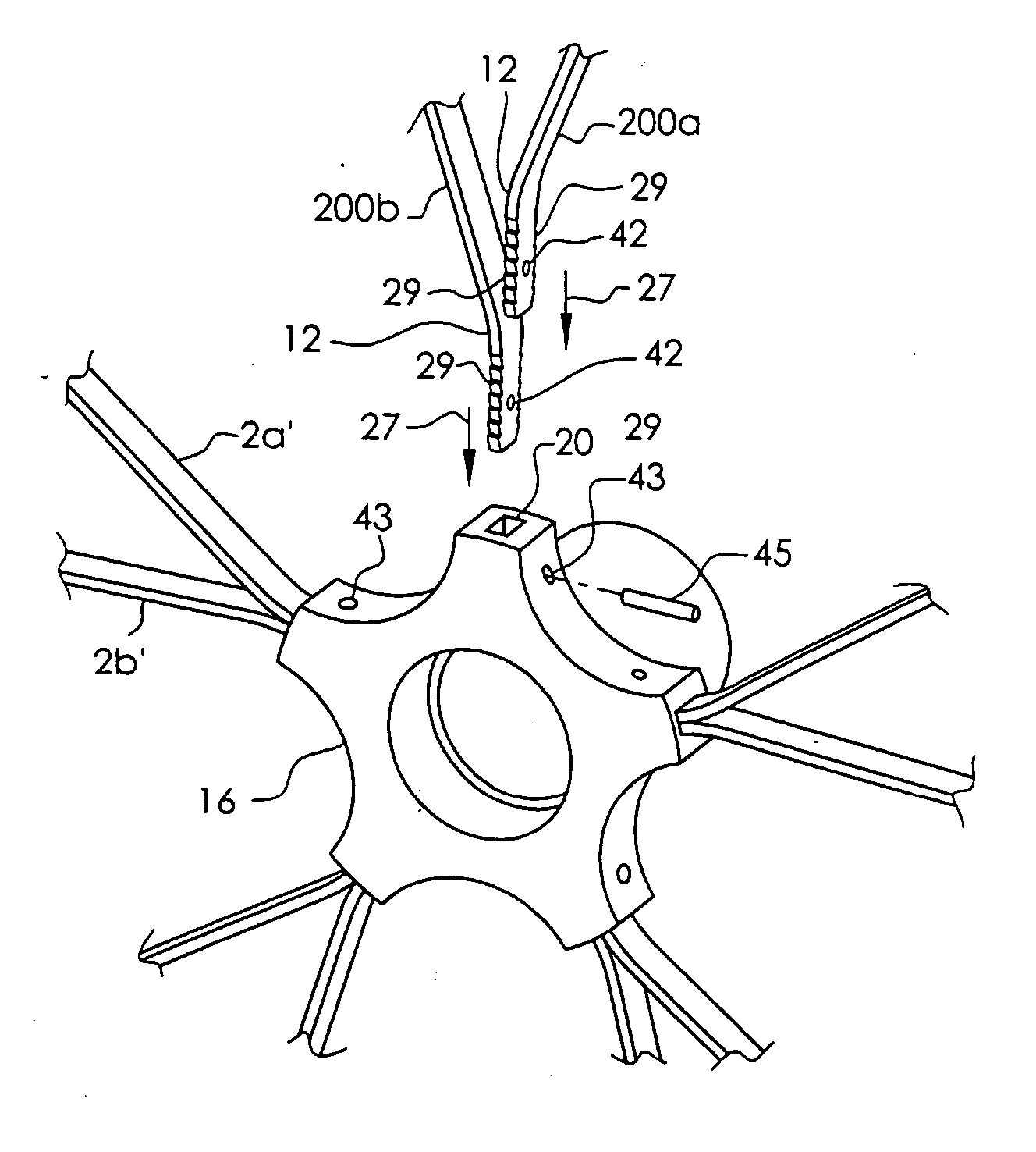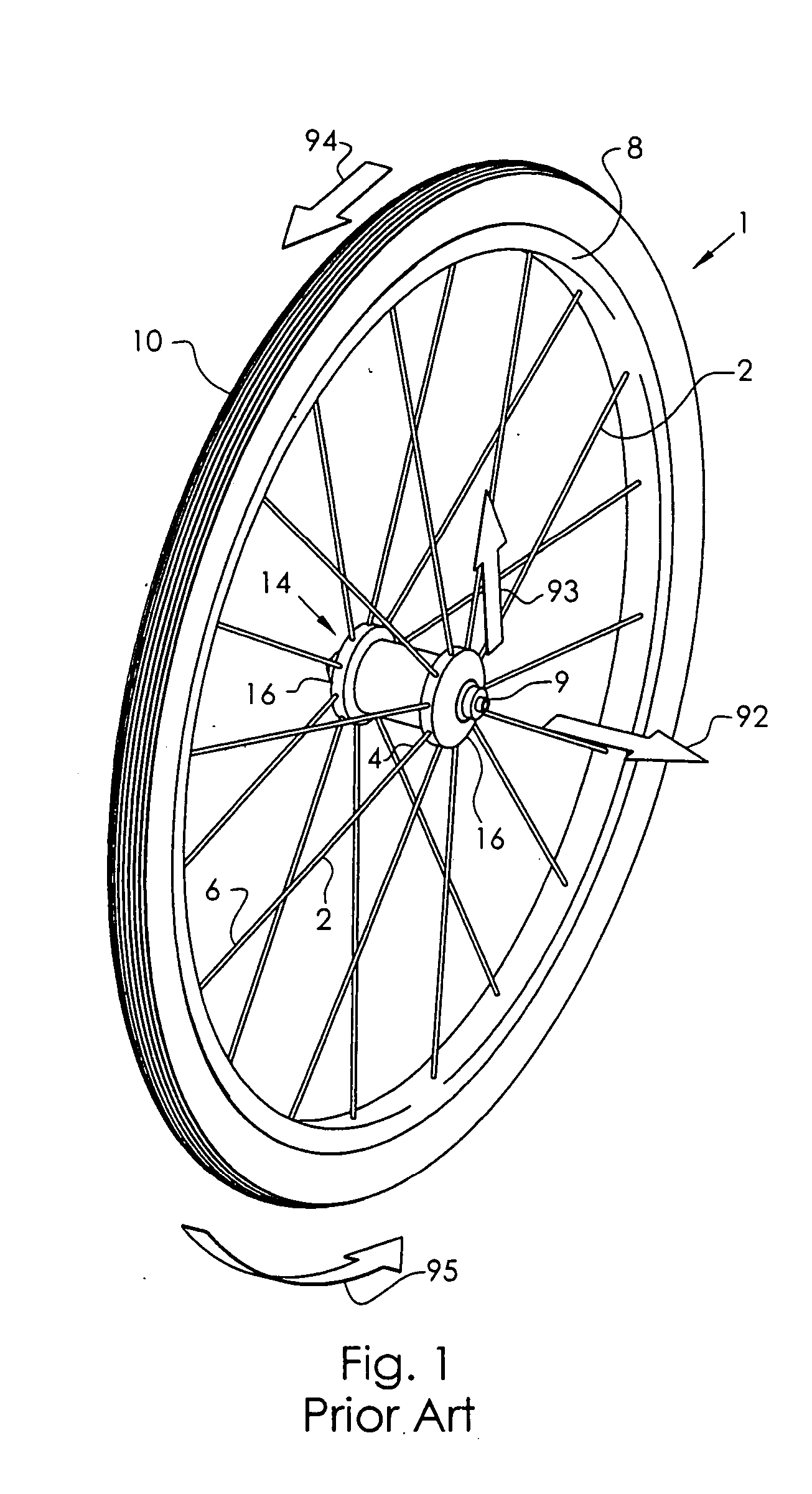Vehicle wheel including spoke attachment
a technology for vehicle wheels and spokes, applied in the field of vehicle wheels, can solve the problems of increasing the weight of the wheel assembly, increasing the cost of manufacturing the hub component, and the multi-step machining process, so as to reduce the cost of machining operations, reduce the amount of material waste, and the effect of reducing the cost of machining
- Summary
- Abstract
- Description
- Claims
- Application Information
AI Technical Summary
Benefits of technology
Problems solved by technology
Method used
Image
Examples
Embodiment Construction
[0077]FIG. 1 describes the basic configuration of a vehicle wheel, in particular, a bicycle wheel 1, as well as a description of the direction conventions used throughout this disclosure. The hub shell 14 is rotatable about the axle 9 and includes at least two axially spaced hub or outer flanges 16, each if which include a means for connecting with the spokes 2. The hub flange 16 may be contiguous with the hub shell 14 or it may be separately formed and assembled to the body of the hub shell 14. The spokes are affixed to the hub flange 16 at their first end 4 and extend to attach the rim 8 at their second end 6. The tire 10 is fitted to the outer periphery of the rim 8. The axial direction 92 is any direction parallel with the axis of the axle 9. The radial direction 93 is a direction generally perpendicular to the axial direction 92. The tangential direction 94 is a direction within the plane of the rim 8 and perpendicular to the radial direction 93. The circumferential direction 9...
PUM
 Login to View More
Login to View More Abstract
Description
Claims
Application Information
 Login to View More
Login to View More - R&D
- Intellectual Property
- Life Sciences
- Materials
- Tech Scout
- Unparalleled Data Quality
- Higher Quality Content
- 60% Fewer Hallucinations
Browse by: Latest US Patents, China's latest patents, Technical Efficacy Thesaurus, Application Domain, Technology Topic, Popular Technical Reports.
© 2025 PatSnap. All rights reserved.Legal|Privacy policy|Modern Slavery Act Transparency Statement|Sitemap|About US| Contact US: help@patsnap.com



